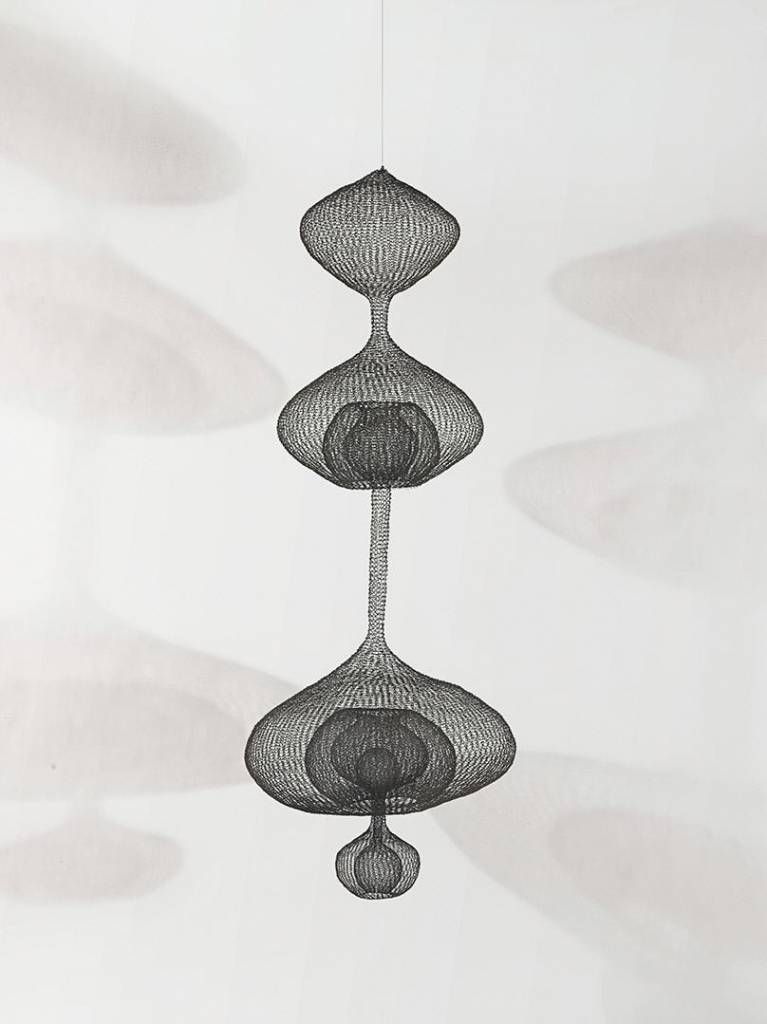
Ruth Asawa (1926 – 2013)
Untitled ca. 1958
Iron wire
Crystal Bridges Museum of American Art, Bentonville, Arkansas
Ruth Aiko Asawa was born in 1926 in southern California to Japanese immigrants who worked as farmers.
On December 7, 1941, Japanese aircraft bombed the US fleet at Pearl Harbor in Hawaii, catapulting the United States into World War II. In February, 1942, Executive Order No. 9066 was signed and issued by President Franklin D. Roosevelt, declaring the West Coast a military zone and interning Japanese-Americans out of fear that they would sabotage American efforts during World War II.Some 127,000 people of Japanese ancestry, including American citizens like Ruth and an estimated 40,000 children were interned.
That same month, Ruth’s father was taken away from their home by FBI officials. The family did not see him again for two years. In April, 1942, Ruth, her mother, and five siblings were removed to a camp in Arcadia, California, and were later moved to the Rohwer Japanese American Relocation Center, in southeast Arkansas. The Asawas lived in horse stables during their time in Arcadia, and in tar-paper barracks in the Rohwer Internment Center.
In 1943, a group called the Japanese American Student Relocation Council provided Ruth with a scholarship to attend college in Milwaukee, Wisconsin, which allowed her to leave the camp. Her family remained interned until 1945.
Ironically, with no farm work to do in the camps, she had more time to continue her creative studies with other interned artists. She also became the art editor of the Rohwer Relocation Center’s high school yearbook. Asawa later reflected on her time in the internment camps, stating, “I hold no hostilities for what happened; I blame no one. Sometimes good comes through adversity. I would not be who I am today had it not been for the internment, and I like who I am.”
After the war, Asawa continued art training at Black Mountain College in North Carolina where she made her first wire sculpture. Asawa worked in a variety of media, including wire sculpture, paintings, drawings, masks, and public commissions until her death in 2013.
In Untitled, metal wiring creates a cage-like organic shape that binds and encloses smaller wire forms. The negative space between the wires creates volume. This work uses lighting to enhance the viewer’s perception of positive and negative space through the use of shadow. While the sculpture seems heavy, definite, eternal, the shadow is more ethereal, hinting at the idea that a work of art is more than the physical object itself. In describing her work, Asawa said: “You can see through it, the piece does not hide anything. You can show inside and outside, and inside and outside are connected. Everything is connected, continuous.“




